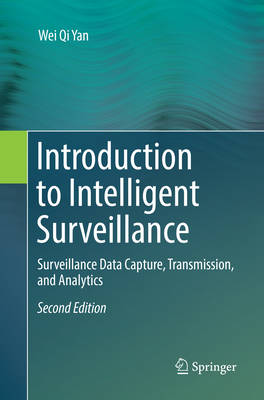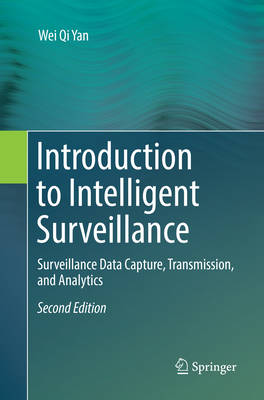
- Retrait gratuit dans votre magasin Club
- 7.000.000 titres dans notre catalogue
- Payer en toute sécurité
- Toujours un magasin près de chez vous
- Retrait gratuit dans votre magasin Club
- 7.000.0000 titres dans notre catalogue
- Payer en toute sécurité
- Toujours un magasin près de chez vous
Introduction to Intelligent Surveillance
Surveillance Data Capture, Transmission, and Analytics
Wei Qi YanDescription
This accessible textbook/reference reviews the fundamental concepts and practical issues involved in designing digital surveillance systems that fully exploit the power of intelligent computing techniques. The book presents comprehensive coverage of all aspects of such systems, from camera calibration and data capture, to the secure transmission of surveillance data. In addition to the detection and recognition of objects and biometric features, the text also examines the automated observation of surveillance events, and how this can be enhanced through the use of deep learning methods and supercomputing technology. This updated new edition features extended coverage on face detection, pedestrian detection and privacy preservation for intelligent surveillance.
Topics and features: contains review questions and exercises in every chapter, together with a glossary; describes the essentials of implementing an intelligent surveillance system and analyzing surveillance data, includinga range of biometric characteristics; examines the importance of network security and digital forensics in the communication of surveillance data, as well as issues of issues of privacy and ethics; discusses the Viola-Jones object detection method, and the HOG algorithm for pedestrian and human behavior recognition; reviews the use of artificial intelligence for automated monitoring of surveillance events, and decision-making approaches to determine the need for human intervention; presents a case study on a system that triggers an alarm when a vehicle fails to stop at a red light, and identifies the vehicle's license plate number; investigates the use of cutting-edge supercomputing technologies for digital surveillance, such as FPGA, GPU and parallel computing.This concise, classroom-tested textbook is ideal for undergraduate and postgraduate-level courses on intelligent surveillance. Researchers interested in entering this area will alsofind the book suitable as a helpful self-study reference.
Spécifications
Parties prenantes
- Auteur(s) :
- Editeur:
Contenu
- Nombre de pages :
- 191
- Langue:
- Anglais
Caractéristiques
- EAN:
- 9783319868110
- Date de parution :
- 12-05-18
- Format:
- Livre broché
- Format numérique:
- Trade paperback (VS)
- Dimensions :
- 155 mm x 235 mm
- Poids :
- 3604 g

Les avis
Nous publions uniquement les avis qui respectent les conditions requises. Consultez nos conditions pour les avis.






